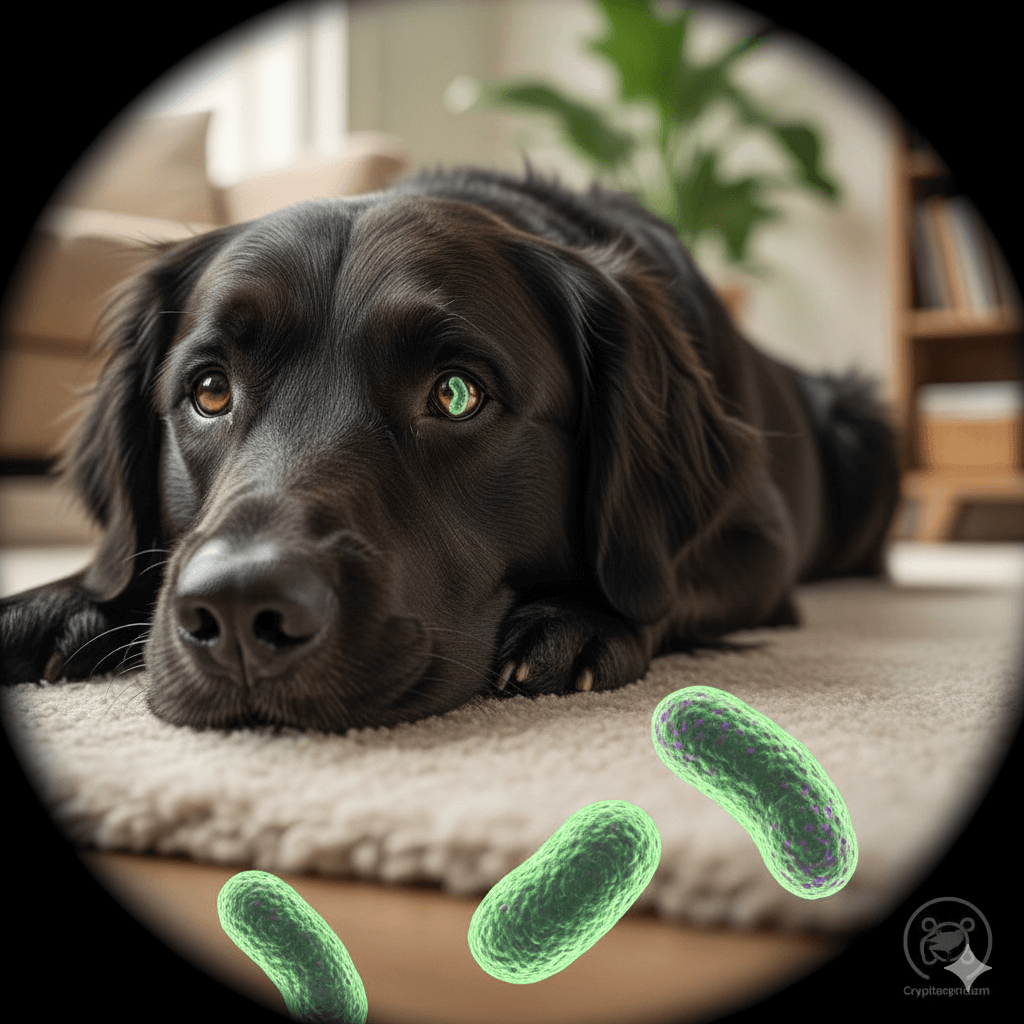Diclofenac for Dogs: What You Need to Know About This Medication
When it comes to managing pain and inflammation in dogs, veterinarians often turn to medications like diclofenac. While this drug is commonly used in human medicine, its application in veterinary care requires careful consideration. Diclofenac belongs to a class of drugs known as non-steroidal anti-inflammatory drugs (NSAIDs), which are designed to reduce swelling, alleviate discomfort, and improve mobility in dogs suffering from conditions such as arthritis or injuries. However, using diclofenac for dogs isn’t as straightforward as it might seem.
In this blog post, we’ll explore everything you need to know about diclofenac, including its uses, potential risks, and alternatives. Whether you’re a pet owner or simply curious about canine health, this guide will help you make informed decisions about your dog’s well-being.
What Is Diclofenac and How Does It Work?
Diclofenac is a powerful NSAID that works by inhibiting the production of prostaglandins—chemicals in the body responsible for causing pain, inflammation, and fever. While it’s widely prescribed for humans, its use in dogs is less common due to potential side effects. Here’s a breakdown of how diclofenac functions and why it’s sometimes considered for canine care.
Anti-Inflammatory Properties:
Diclofenac reduces inflammation by targeting enzymes that produce prostaglandins, providing relief for conditions like arthritis or joint injuries.Pain Relief:
By blocking pain signals at the source, diclofenac helps dogs feel more comfortable during recovery or while managing chronic conditions.Fever Reduction:
In some cases, diclofenac may be used to lower fever in dogs, though this is less common than its use for pain and inflammation.Topical Application:
Unlike oral NSAIDs, diclofenac is often administered as a gel or cream for localized treatment, minimizing systemic side effects.Limited Veterinary Use:
Veterinarians typically prefer other NSAIDs specifically formulated for dogs, as diclofenac can pose risks if not used carefully.
While diclofenac has its benefits, its use in dogs must always be guided by a veterinarian to avoid complications. Understanding how it works is the first step toward safe and effective treatment.
Conditions Treated with Diclofenac in Dogs
Diclofenac is primarily used to address specific health issues in dogs where pain and inflammation are significant concerns. While it’s not a first-line treatment, it can be effective when applied correctly. Below are some common conditions where diclofenac may be considered.
Osteoarthritis:
This degenerative joint disease causes pain and stiffness, making diclofenac a potential option for managing symptoms.Soft Tissue Injuries:
Sprains, strains, and other soft tissue injuries can benefit from the anti-inflammatory effects of diclofenac.Post-Surgical Pain:
After certain surgeries, diclofenac may be used topically to reduce swelling and discomfort around the incision site.Joint Inflammation:
Conditions like bursitis or tendonitis often respond well to localized diclofenac treatments.Skin Irritations:
In some cases, diclofenac gel can soothe inflamed or irritated skin caused by allergic reactions or minor wounds.
These applications highlight diclofenac’s versatility, but it’s crucial to consult a vet before using it for any condition. Proper diagnosis and guidance ensure your dog receives the safest care possible.
Check this guide 👉Is Phlox Safe for Dogs? Best 7 Expert Tips!
Check this guide 👉Robitussin DM Dosage for Dogs: Best 7 Expert Tips!
Check this guide 👉Using Iodine for Dogs Wounds: Best 7 Health Tips!

Benefits of Diclofenac for Dogs | Potential Risks of Diclofenac for Dogs |
|---|---|
Reduces inflammation effectively | Risk of gastrointestinal upset |
Provides targeted pain relief | Potential for skin irritation |
Minimizes systemic side effects | Not suitable for long-term use |
Easy to apply topically | Overuse can lead to kidney damage |
Helps with localized treatment | May interact with other medications |
How to Safely Administer Diclofenac to Your Dog
If your veterinarian recommends diclofenac for your dog, it’s essential to follow their instructions carefully to ensure safety and effectiveness. Here are some tips for administering this medication responsibly.
Consult Your Vet First:
Always seek professional advice before using diclofenac, even if it’s available over-the-counter for humans.Use Only Topical Forms:
Oral diclofenac is rarely recommended for dogs, so stick to gels or creams designed for external use.Apply Sparingly:
A small amount of diclofenac gel is usually sufficient; avoid applying excessive amounts to prevent absorption into the bloodstream.Monitor for Side Effects:
Watch for signs of irritation, lethargy, or digestive issues, and contact your vet immediately if they occur.Avoid Licking:
Ensure your dog doesn’t lick the treated area, as ingestion can lead to toxicity. Use an Elizabethan collar if necessary.
By following these guidelines, you can minimize risks and maximize the benefits of diclofenac for your dog. Safety should always come first when using any medication.
Alternatives to Diclofenac for Dogs
While diclofenac can be helpful in certain situations, there are safer and more commonly prescribed alternatives for managing pain and inflammation in dogs. These options are specifically formulated for canine physiology, reducing the risk of adverse effects.
Carprofen (Rimadyl):
A popular NSAID for dogs that effectively manages pain and inflammation with fewer side effects than diclofenac.Meloxicam (Metacam):
Often used for long-term management of arthritis, meloxicam is gentle on the stomach and highly effective.Grapiprant (Galliprant):
A newer NSAID that targets pain pathways without affecting prostaglandins involved in digestion and blood flow.Physical Therapy:
Non-medication approaches like hydrotherapy or massage can complement or replace NSAIDs for chronic conditions.Supplements:
Glucosamine and chondroitin supplements support joint health and may reduce the need for medications.
These alternatives provide safer and more tailored solutions for your dog’s needs. Always discuss options with your vet to find the best fit.
Signs That Your Dog Needs Pain Management
Recognizing when your dog is in pain is the first step toward seeking appropriate treatment. Here are some signs that indicate your dog may benefit from pain management, potentially including diclofenac.
Limping or Favoring a Limb:
Difficulty walking or limping suggests joint pain or injury.Reluctance to Move:
If your dog avoids activities they once enjoyed, it could signal discomfort.Whining or Vocalizing:
Excessive vocalization, especially during movement, indicates pain.Changes in Behavior:
Increased aggression or withdrawal may be linked to underlying pain.Swelling or Redness:
Visible inflammation around joints or limbs requires immediate attention.
Identifying these signs early allows for timely intervention and better outcomes for your dog’s health.
Natural Remedies to Complement Pain Management
For pet owners seeking holistic approaches, natural remedies can complement conventional treatments like diclofenac. Here are some safe options to consider.
Turmeric:
Known for its anti-inflammatory properties, turmeric can be added to your dog’s food in moderation.Omega-3 Fatty Acids:
Found in fish oil, these support joint health and reduce inflammation.CBD Oil:
Non-psychoactive CBD oil may help alleviate pain and anxiety in dogs.Cold Compresses:
Applying cold packs to swollen areas can reduce inflammation temporarily.Weight Management:
Maintaining a healthy weight reduces strain on joints and minimizes pain.
These natural remedies offer additional ways to support your dog’s recovery and comfort.
Tips for Preventing Joint Issues in Dogs
Prevention is key to avoiding the need for medications like diclofenac. Here are some proactive steps to keep your dog’s joints healthy.
Regular Exercise:
Moderate daily activity keeps joints flexible and muscles strong.Balanced Diet:
Providing nutrient-rich food supports overall health and joint function.Avoid Hard Surfaces:
Limit playtime on hard floors to reduce impact on joints.Joint Supplements Early On:
Start supplements like glucosamine early, especially for large breeds prone to joint issues.Routine Vet Checkups:
Regular exams help detect and address potential problems before they worsen.
Taking preventive measures ensures your dog stays active and pain-free for years to come.
Frequently Asked Questions About Diclofenac for Dogs
Can I give my dog human diclofenac tablets?
No, oral diclofenac is not safe for dogs and can cause serious side effects. Stick to topical forms only under veterinary supervision.
How long does it take for diclofenac to work?
Topical diclofenac usually starts working within a few hours, with full effects seen after regular application over several days.
Are there any breeds that should avoid diclofenac?
Breeds prone to kidney or liver issues, such as Greyhounds or Dobermans, require extra caution when using NSAIDs like diclofenac.
Can diclofenac be used alongside other medications?
It depends on the medication. Always inform your vet about all treatments your dog is receiving to avoid harmful interactions.
What should I do if my dog swallows diclofenac gel?
Contact your vet immediately, as ingestion can lead to toxicity. Do not wait for symptoms to appear.
Final Thoughts: Prioritizing Your Dog’s Health When Considering Diclofenac
While diclofenac can be a useful tool for managing pain and inflammation in dogs, it’s not without risks. As a responsible pet owner, it’s crucial to prioritize your dog’s safety by consulting your veterinarian before starting any new treatment. Whether you choose diclofenac or opt for a safer alternative, the goal is always to improve your dog’s quality of life. Remember, every dog is unique, and what works for one may not work for another. By staying informed and working closely with your vet, you can ensure your furry friend receives the best care possible.
Understanding Cryptosporidium in Cats: Best 7 Expert Tips! – Spot symptoms, treat safely, and stop parasite spread in your home.
Understanding Cryptosporidium in Dogs: Best 7 Expert Tips! – Learn symptoms, treatment & prevention for this stubborn gut parasite.
Understanding Syringomyelia in Cats: Best 7 Expert Tips! – Recognize signs, manage pain, and support your cat’s neurological health with vet-backed guidance.
Understanding Syringomyelia in Dogs: Best 7 Expert Tips! – Expert insights on symptoms, MRI diagnosis, pain management & quality of life.





